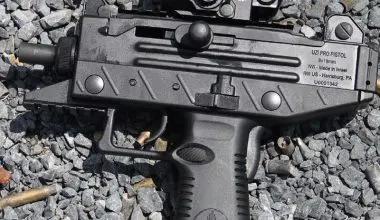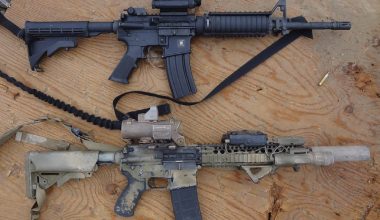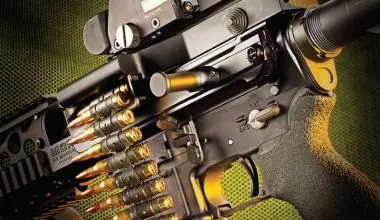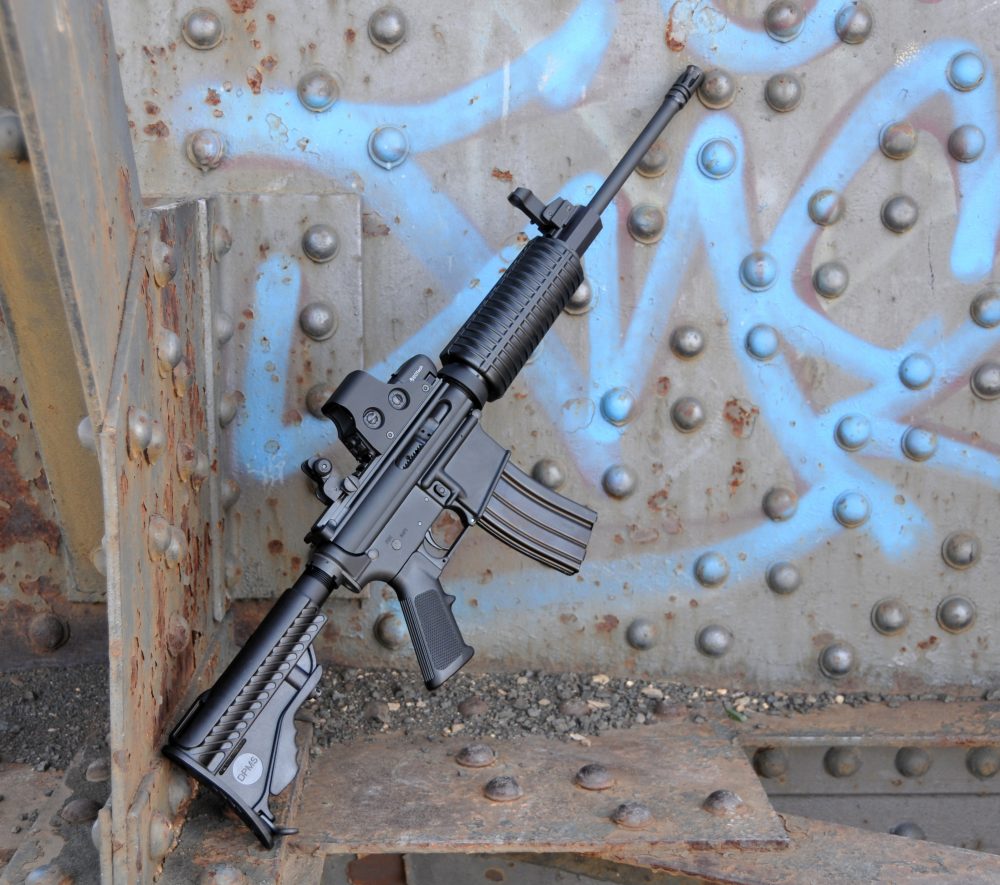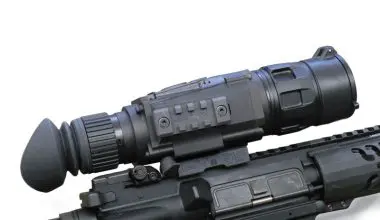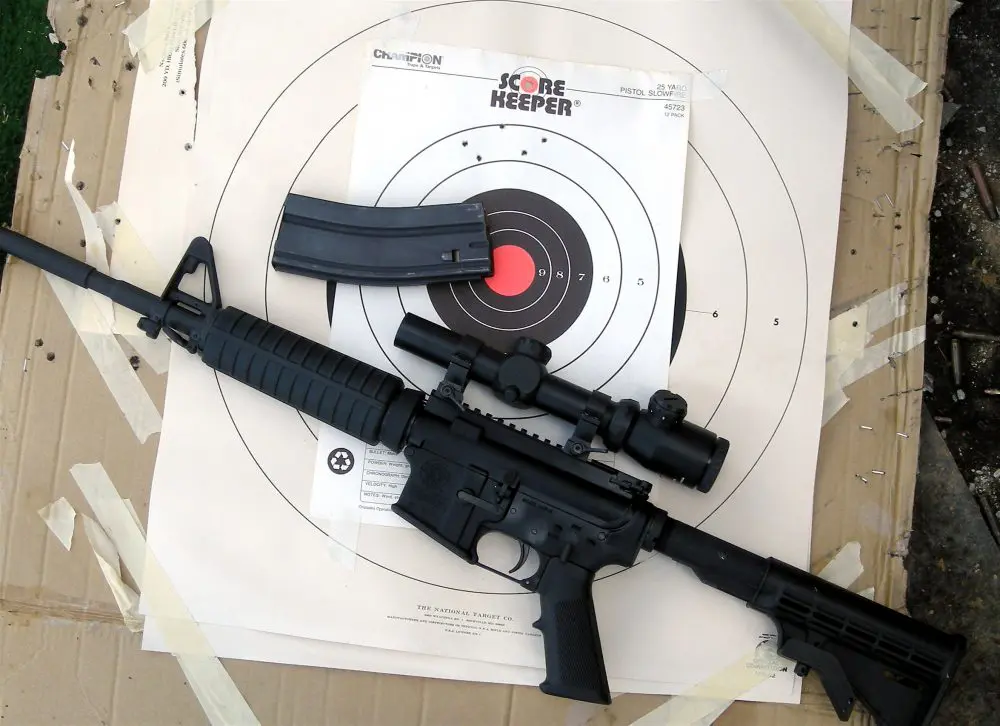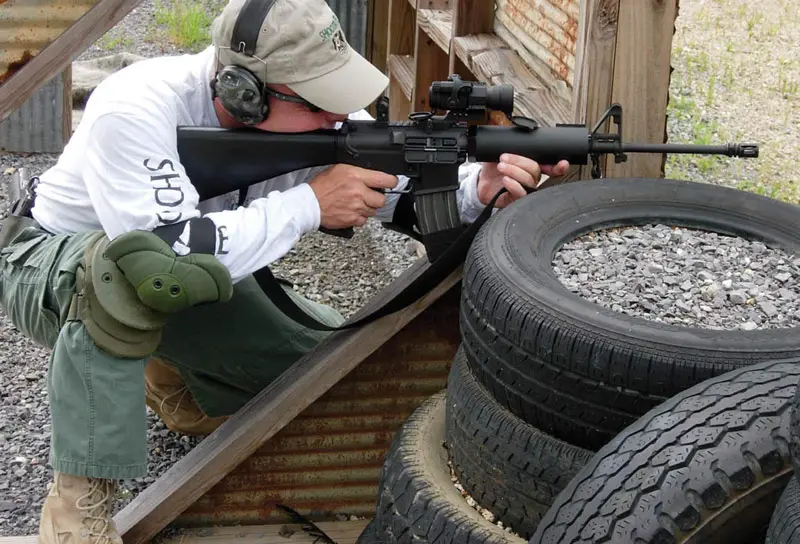
Unless they are extraordinarily disciplined, human beings seem to move naturally to levels of higher and higher complexity, until very soon, the tail can be wagging the dog— sometimes hard enough to beat old Fido to death against the floor. We’ve all seen it: the pursuit of high-speed, low-drag by way of an anchor load of bells, whistles and gadgets.
I grew up on Bruce Lee’s classic book of fighting, Tao of Jeet Kune Do, where Lee (who was extraordinarily disciplined) wrote these words of enduring wisdom about his fighting system:
“In Jeet Kune Do, one does not accumulate but eliminate. The height of cultivation is really nothing special. It is merely simplicity; the ability to express the utmost with the minimum. It is the halfway cultivation that leads to ornamentation. Jeet Kune Do is basically a sophisticated fighting style stripped to its essentials.”
Table of Contents
KATANA IN ACTION
There is something about extreme heat that makes simplicity even more attractive. I was shooting a team tactics class last year under the tutelage of veteran firearms instructor Tiger McKee at his Shootrite Firearms Academy in Langston, Alabama. I’d left my old Colt Sporter AR-15 at home in Montana and was very happily shooting McKee’s Shootrite Katana, his own personal rifle and his own personal design—a stripped-down and very lightweight version of the AR-15.
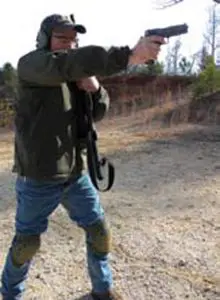
Moving and shooting, running the urban combat simulator McKee calls The Wall, the great Alabama sun bore down on me like a man trying to smash a tick with his thumb. Sweatslick hands, sweat-blurred vision, zero patience for anything non-essential. The little Katana, streamlined and extremely lightweight, seemed made to order. It lived up to its namesake, the iconic sword of the Japanese Samurai, that utterly unadorned weapon of lethal simplicity, forged of the best and fewest possible components.
In the interest of full disclosure, I’ve known Tiger McKee for most of my life, and even served as a guinea pig for some of his earliest Shootrite classes almost two decades ago. I first shot the Katana during a personal one-on-one class at Shootrite in the winter of 2009, and was impressed with the way the concept—a simple-to-operate, lightweight rifle—is realized by the design.
I wanted one in my own quiver of rifles, and knew other shooters who would too. I was aware, though, of a flood of AR rifles coming up for sale at the time. It was a deeply competitive buyer’s market. I asked McKee why he’d decided to enter the fray with the Katana.
“It was never about having a rifle that would compete in the market,” he said. “I’m not interested in that. I just saw the trend that all the manufacturers were following, building heavier and more complicated rifles, and I wanted the opposite. I wanted a rifle that was true to Eugene Stoner’s original vision for the M16/AR, but one that was updated with bomb-proof modern components for reliability.”
When he couldn’t find that, he decided to build one. “I just built the rifle that I wanted to shoot. And over time, my students asked me where I got mine. They’d shoot it, run part of a course with it, and see what was obviously clear to Eugene Stoner: under stress, simpler is better. And they wanted one. I started out building the uppers for them, but I couldn’t build nearly enough of them at home to meet the demand.”
DETAILS
McKee would solve that problem, but before we get into the solution, let’s look at the rifle itself. “Remember,” McKee reiterated, “I built the Katana for me. This is my ideal, and if shooters want a more complicated system, there’s plenty of that out there.” McKee’s ideal meant doing away with heavy barrels, thickrailed handguards, vertical foregrips and tactical slings. Folding sights were out, as were complicated lighting systems. The Katana uses a thin 16-inch barrel with a 1:8.5 twist rate.
“The lightweight barrel is best for maneuvering in tight quarters, quick and easy to handle during conflict, and plenty accurate—more accurate than you’re going to be able to shoot it under field conditions.” Around the barrel is a single-piece carbon-fiber handguard with the barrel nut permanently attached. A rail section at eleven o’clock (for right-handed shooters) allows for the attachment of a light. “The eleven o’clock position is the best for rolling out from behind cover and for clearing both left- and right-hand corners,” McKee explained.
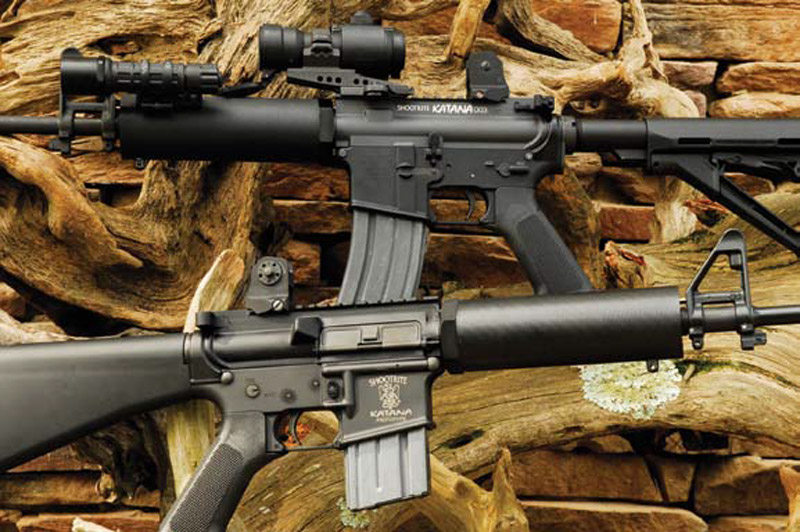
The Katana has a flat-top upper receiver, ready for mounting the optic of your choice. One of the first things I noticed about the rifle is that it has no external forward assist behind the bolt. McKee explained, “When you get a cartridge that won’t seat in a rifle, and you deliberately drive it in, you’re usually buying yourself more trouble.” The simple concave cutout behind the exposed part of the bolt carrier provides the same assist function, but without the leverage that will force a bad cartridge into your rifle and put you out of business. Simply put: if the bolt won’t seat a cartridge with the pressure of the finger in the cutout, that cartridge needs to be cycled out of the rifle, not jammed into it.
In the same tradition of pragmatism, the Katana comes with a fixed front sight and removable A1 drum-style rear. The sights can be left on as back up for a red-dot system (supplied by the buyer) or used as the primary sighting system.
Among the “bomb-proof” modern components installed in the Katana is a milspec bolt assembly with an MPI bolt. The firing pin is held in with a solid retaining pin rather than the split cotter key type. Extractor and ejector springs are chrome silicon alloy for durability, trueness and corrosion resistance.
In his many years as a firearms instructor, McKee had witnessed innumerable instances of bent and twisted charging handles on ARs, and he vowed to find one for the Katana that would stand up to whatever the operator could dish out. “When a charging handle twists, it locks up the bolt carrier. You’re done. It’s one crucial part that has to be of the utmost quality.” McKee’s answer for the Katana was Bravo Company’s Gunfighter charging handle.
The Katana’s Daniel Defense lower receiver sticks tightly to basics, milspec components and trigger, with nothing fancied up to go wrong in the heat and dust of reality. “I see these three-pound aftermarket trigger assemblies, and they are just inappropriate for a fighting rifle,” McKee said. “You see them sold as ‘match triggers’ or ‘competition triggers,’ and they’re fine for that function. But you’re introducing variables that can lock up or break, and what might be just a hassle on the range will mean something entirely different in the field.” The standard trigger assemblies have proven reliability, an acceptable and crisp pull, and that positive trigger reset that a shooter can feel.
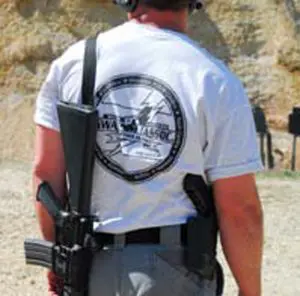
KATANA MEETS THE WORLD
Since McKee built the first Katana for himself and then began building a few uppers for loyal Shootrite students, the rifle has found its way from Langston, Alabama out into a much wider world. In early 2009, McKee discussed the possibility of assembling the Katana on a limited scale with Will Hayden of Red Jacket Firearms in Baton Rouge, Louisiana.
At first Hayden was reluctant to take on a new project. “We got our fame working on AKs,” Hayden told me in his deep Louisiana drawl, “and we didn’t see any reason to shift our focus to something else. But when I saw Tiger’s design, I recognized a kindred spirit. The more I looked at what he was doing, the more I wanted to be a part of it.” Like McKee, Hayden believes that the highest form of a fighting rifle is the simplest and most reliable version.
One of the assets of the Katana, Hayden explained, is the match-grade barrel that is part of the design. “It’s a non-chrome-lined barrel, which is inherently more accurate. We knew we didn’t need the chrome—this isn’t ‘Nam, we’re shooting mostly good ol’ American ammo, and we even get a chance to clean our guns once in awhile, so we don’t need it.”
The Katana is a fighting rifle, so the barrel is trued not to .223 specs, but to actual 5.56mm. “It’s a big difference,” Hayden says, “and nobody who knows what that difference is will go out the door with a .223 barrel. The .223 is too tight for military spec ammo, and it will get you into trouble eventually. What we are producing is a fighting rifle that stays within match-grade specs. We want our customers to be able to win a competition with their fighting rifle, if that’s what they want to do. Basically, it’s a competition gun that has not lost sight of what you are training for.”
TV STAR
The Katana has become familiar to more shooters since a television episode of Sons of Guns—a Discovery channel series that focuses on the work done by Hayden and his staff at Red Jacket—that showed the making of the rifle, and had Tiger shooting his own creation on the Red Jacket range as a finale.
These days, it takes a little longer to get a Katana from Red Jacket. Hayden says the production cycle for the rifle is about six weeks, and they are currently telling customers it will take about three months to get the finished rifle into their hands.
The Katana comes with a standard A1 stock, which is 5/8-inch shorter than that of the A2 and makes a better fit for most shooters. Optional is a Magpul CTR adjustable stock with six-position buffer tube. On the A1 stock, the rear sling mount is installed on the side of the stock. This lets the rifle hang flat against your body—a very small adjustment that completely changes how the rifle carries and dramatically shortens the time it takes to go from carry to ready position.
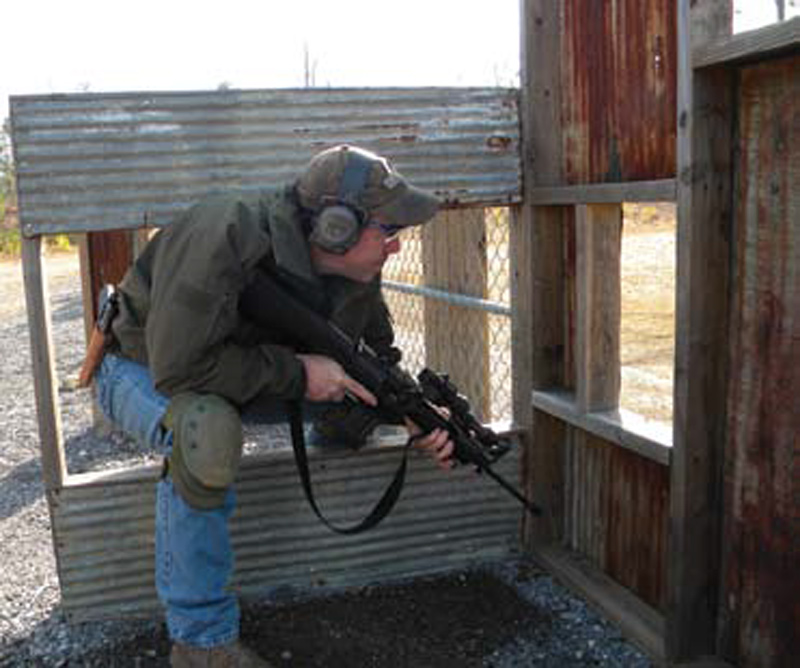
PRICE POINT
The Katana is pricey and has drawn criticism for that on some Internet forums. According to Red Jacket’s website, the basic version is $1,849.95; with the Magpul stock, $1,924; and for the upper only, it’s $1,249.95. I know that markets have changed a lot since I bought my Colt Sporter in 1993, but I paid over a grand for it then, and there’s never been a single day that I’ve regretted anything about the purchase.
Are there plenty of ARs that will perform well for less than what you’d pay for a Katana? Yes. But now I have to go back to the clichéd question: if you could only have one rifle, what would it be? For me, the Katana is at the top of the list.
I did not come to this conclusion lightly. Handling the rifle first in the winter of 2009, I was at first suspicious of its extremely light weight. Just as McKee and Hayden have become suspicious of ever-heavier fighting rifles, I’ve become suspicious of ever-lighter hunting and varmint rifles. I may be a throwback, but I can’t find the balance point on many of the lightest modern rifles. I’d rather carry a couple extra pounds than shoot a rifle that does not feel right. But the Katana does have a balance point, and for me, it rises and points like the finest 19th-century dueling pistols. Shooting it in the winter with a heavy jacket, my cheekweld was perfect. Shooting in the dead heat of August wearing a light cotton shirt, it was still close enough that I didn’t have to consciously seek a good cheekweld.
ACCURACY
So how does that thin barrel stack up for accuracy?
I was working offhand with the rifle at 30 yards, excellent footing, plenty of time, good ammo, and shooting a 2 ½-inch group. I backed up and maintained my stance, and the group widened a bit. McKee doesn’t keep a bench and sandbags on the range—he’s a bit fed up with the obsession Americans have developed with hyper accuracy, and is convinced it’s taking energy away from the development of practical reallife shooting skills. “You want a rifle that will shoot better than you can shoot it, and that’s it,” he said.
We ran through malfunction and reload drills, and the rifle’s light weight made it easy to keep it up, on target through it all, even a couple hours in. Running The Wall with the Katana, 400 or more rounds into the day, both in the winter class and the August class, was the easiest it had ever been for me.
DECISIONS
I’ll never get rid of my old Colt Sporter with its 20-inch HBAR. But running The Wall with it and shooting all day is an entirely different experience—like toting a very nice piece of lethal firewood. And when we backed up to the 100+ yard mark for a series of drills addressing use of cover, shooting from prone, and using a rooftop as a rest, yes, I think I would have shot better groups with my Sporter. But maybe not—I would have been so much more exhausted, and more harried, than I was with the Katana, so the difference might have been negligible.
What was important, and very satisfying, was the constant banging of the metal targets, from 30 yards to over 100, with nary an awkward silence to mark a miss.
The Katana, like the Samurai sword that is its namesake, is sophisticated in the simplest possible way. Like the principles of Jeet Kune Do that first inspired its design, it is a fighting system stripped to the essentials. However, it’s not for everybody. For some people, part of the enjoyment of the martial art of the firearm, of seeking out that perfect rifle, is the very adornment—some of it highly functional—that the Katana has so blatantly discarded. But for some shooters, and I’m among them, the Katana fits the bill better than any other AR out there.
I think it’s pricey too, but rather than pitching a fit about it, I’m tossing aside a few extra bucks each week toward the purchase price.
